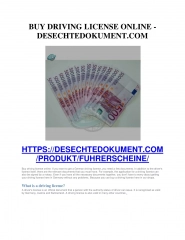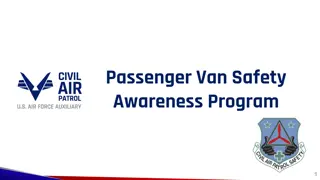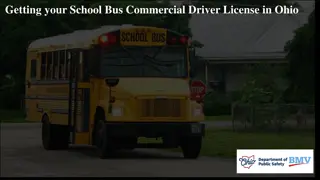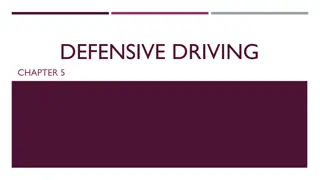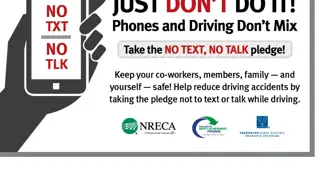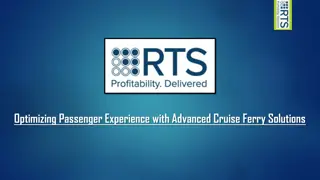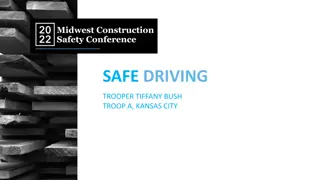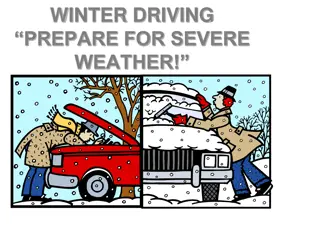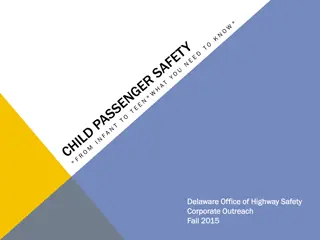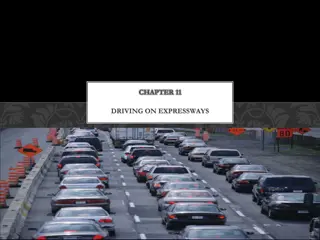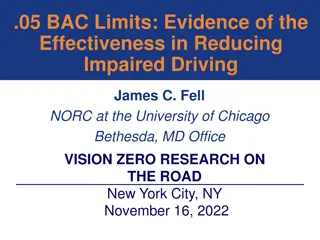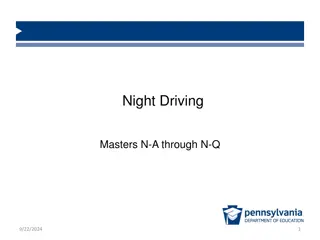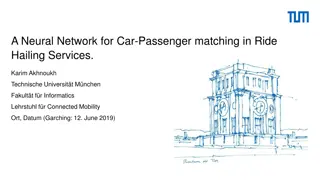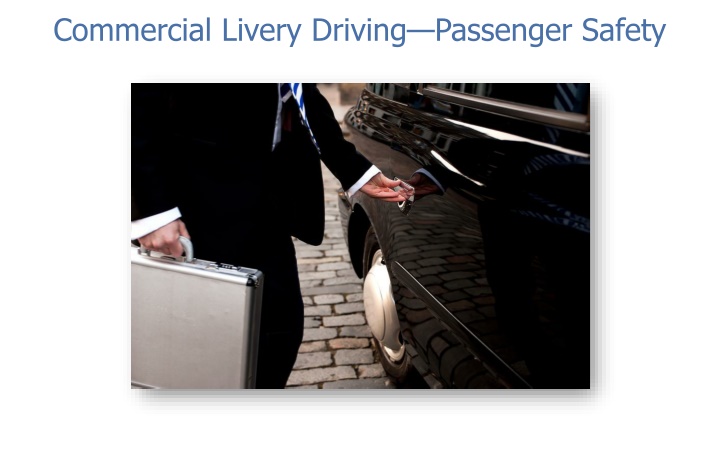
Driver Safety Training for Commercial Livery Vehicles
Enhance your knowledge on vehicle preparation, safe driving procedures, passenger communication, and special considerations in this comprehensive driver safety training for commercial livery services. Disclaimer: This material serves as a guide and does not ensure legal compliance in all states.
Download Presentation

Please find below an Image/Link to download the presentation.
The content on the website is provided AS IS for your information and personal use only. It may not be sold, licensed, or shared on other websites without obtaining consent from the author. If you encounter any issues during the download, it is possible that the publisher has removed the file from their server.
You are allowed to download the files provided on this website for personal or commercial use, subject to the condition that they are used lawfully. All files are the property of their respective owners.
The content on the website is provided AS IS for your information and personal use only. It may not be sold, licensed, or shared on other websites without obtaining consent from the author.
E N D
Presentation Transcript
Introduction How to Use this Presentation DISCLAIMER This training material presents very important, pertinent information. It should not be assumed, however, that this program satisfies every legal requirement of every state. Some states require the training be developed and delivered by an individual with specific training and experience. This presentation contains base material for use in an instructor-led training setting. You may modify this presentation to satisfy the specific training needs of your organization. This training is AWARENESS LEVEL and does not authorize any person to perform work or validate their level of competency; it must be supplemented with operation and process- specific assessments and training, as well as management oversight, to assure that all training is understood and followed. On some slides, the display text is supplemented with additional material in the slide notes. This content is licensed for modification and use in a classroom setting. You may not redistribute this material in any form. Your organization must do an evaluation of all exposures and applicable codes and regulations. In addition, establish proper controls, training, and protective measures to effectively control exposures and assure compliance. This program is neither a determination that the conditions and practices of your organization are safe, nor a warranty that reliance upon this program will prevent accidents and losses or satisfy local, state, or federal regulations.
Learning Objectives Prepare the vehicle for passenger comfort and safety. Prepare yourself to perform duties safely and correctly. Follow safe pick-up and drop-off procedures. Communicate important information to passengers. Take special measures for passengers who have disabilities or are under the influence.
Course Outline 1. Pre-trip Preparation 2. Driving Procedures 3. Passenger Communication 4. Special Considerations 5. Summary
Pre-trip Preparation Vehicle comfort and safety: Vehicle in good repair Clean and smoke-free interior Comfortable and safe seats Comfortable interior temperature Fully visible driver s photo identification card Calibrated and sealed fare meter Receipt capability
Pre-trip Preparation Driver preparation: Defensive driving knowledge and abilities Knowledge of routes and directions Proper attire and appearance
Pre-trip Preparation Safe lifting: Back injuries due to improper lifting are common for drivers. Learn how to lift without causing injury to yourself. Have a safe lifting program and policy.
Driving Procedures Passenger interaction guidelines: Be courteous, professional, and a calming influence. Do not discriminate based on race, creed, color, religion, national origin, sex, age, marital status, sexual orientation, political affiliation, or disability. Provide assistance, if and when requested. Provide a reasonably quiet travel atmosphere. Accommodate service dogs.
Driving Procedures Passenger pick-up: Be cautious when approaching passengers. Make sure that you have the right passenger.
Driving Procedures Passenger drop-off: Park so that passengers can easily enter or exit the vehicle. Offer to help your passengers exit safely. Always check the seats where the passengers have been sitting.
Passenger Communication 1. Any extra fees: If there is a surcharge for picking up passengers at your local airport, inform them. 2. Safety belt use: Always request that your passengers buckle up. 3. Exact destination: An exact destination is required before leaving. 4. Handling luggage: If needed, give passengers a brief warning about the hazards of lifting. 5. Food and drink: Ask passengers to be careful with any food or drink.
Passenger Communication 6. Seating capacity:Do not take more passengers than the vehicle s capacity, as this can result in an uncomfortable or unsafe situation. 7. Seating placement: The back seat is preferred, but the front seat may be allowed. 8. Remaining seated: Ask passengers to remain seated at all times. 9. Checking the seats: Always ask your passengers to check behind themselves when exiting the vehicle. 10. Unsafe drop-off locations: Avoid dropping a passenger off in a secluded back alley, dark area, or remote parking lot.
Special Considerations Intoxicated passengers: Always use extreme caution. Check on the legal statutes. Ask intoxicated passengers if they will be meeting someone.
Special Considerations Intoxicated passengers (continued): Ask passengers to let you know if they are feeling sick or ill. Acute alcohol poisoning is a serious medical emergency. Be calm and reassuring, not confrontational or argumentative. If needed, turn on your trouble light and discreetly notify your dispatcher.
Special Considerations Passengers with disabilities: Ask passengers with disabilities if they would like help. Do not offer assistance you cannot provide. Your dispatcher should be informed in advance. If you are unable to provide help, ask your dispatcher to send assistance.
Summary Prepare yourself and the vehicle. Know proper lifting techniques. Provide a calm and positive traveling atmosphere. Communicate safety rules and other information to passengers. Do not leave without a specific destination. Do not take more passengers than the vehicle capacity. Be cautious with intoxicated passengers and watch for signs of acute alcohol poisoning. Prepare in advance for passengers with disabilities and get help if needed.

